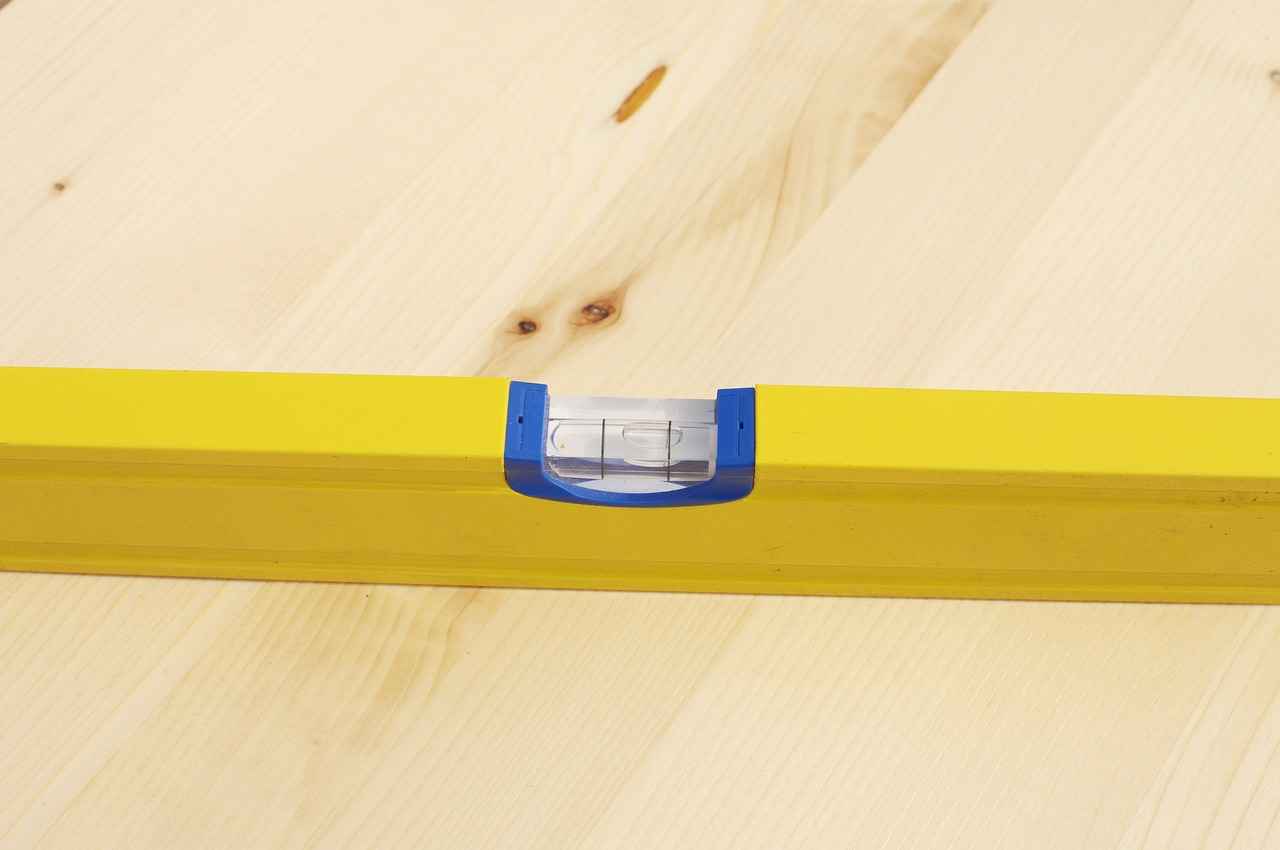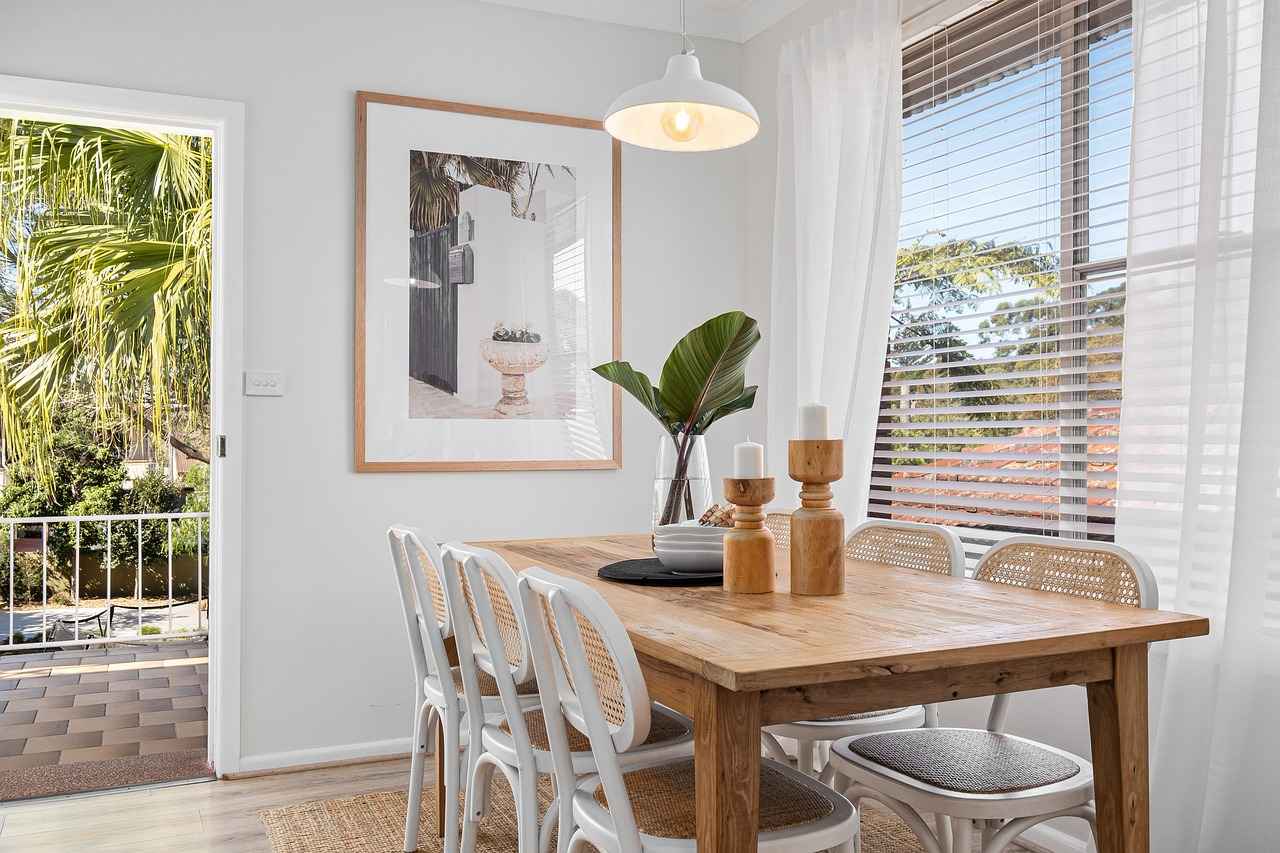This article explores creative ways to repurpose old doors into stunning room dividers, offering practical tips and insights for a stylish home transformation. Whether you’re looking to create a cozy nook or separate spaces in an open floor plan, old doors can add character and functionality to your home.
Repurposing old doors as room dividers can enhance your space’s aesthetics, provide privacy, and save money while being environmentally friendly. By choosing to reuse rather than buy new, you contribute to sustainability efforts and can achieve a unique look that mass-produced items often lack.
Selecting the right doors is crucial for a successful DIY project. Consider the following:
- Materials: Wood, metal, or glass?
- Size: Ensure they fit your designated space.
- Style: Match with your existing decor.
Different materials can affect the overall look and durability of your room divider. Here’s a quick overview:
- Wood: Offers warmth and versatility.
- Metal: Adds a modern touch and is often lighter.
- Glass: Creates an illusion of openness while providing separation.
Wooden doors provide warmth and texture, making them a popular choice for rustic or traditional interiors. Their versatility allows for various finishes to match your decor, from sleek stains to vibrant paints.
Metal and glass doors can lend a modern touch to your space. They are often lighter and can create an illusion of openness while still providing separation. Consider frosted glass for added privacy.
Before starting your project, it’s essential to measure your space accurately. This ensures your room divider fits perfectly and serves its intended purpose. Use a measuring tape and mark your dimensions clearly.
Having the right tools is vital for a smooth DIY experience. Basic tools include:
- Saw
- Drill
- Screwdriver
- Sandpaper
- Paintbrush
Safety should be a priority during any DIY project. Wearing protective eyewear, gloves, and a dust mask can prevent injuries and ensure a safe working environment.
Sanding and painting are critical steps to achieve a polished look. Start by sanding the surface to remove any old paint or imperfections. Then, apply a primer followed by your chosen paint for a durable finish.
There are countless design possibilities when using old doors as dividers. From sliding doors to hinged panels, explore various styles to find what suits your aesthetic. Here are some ideas:
- Sliding Door Divider: Saves space and adds a contemporary feel.
- Hinged Doors: Can be opened or closed as needed, providing flexibility in how you use your space.
Regular maintenance will keep your room divider looking fresh and stylish. Simple cleaning and occasional touch-ups will ensure it stands the test of time. Consider applying a protective coat every few years to preserve the finish.

What Are the Benefits of Using Old Doors as Room Dividers?
Repurposing old doors as room dividers offers a multitude of benefits that can transform your living space into a more functional and aesthetically pleasing environment. Not only does this creative approach allow you to save money, but it also promotes sustainability by giving new life to items that might otherwise end up in a landfill.
Old doors have unique character and charm that can add a distinctive touch to your home decor. Whether you choose a vintage wooden door with intricate carvings or a sleek, modern metal door, these elements can serve as eye-catching focal points in your rooms. By incorporating repurposed doors into your design, you can create a cohesive and stylish look that reflects your personal taste.
One of the primary functions of a room divider is to provide privacy. Old doors can effectively separate spaces without the need for permanent walls. This is particularly useful in open-concept homes where you may want to create a more intimate atmosphere in certain areas, such as a home office or reading nook. The right door can help define these spaces while still allowing light to flow through.
Purchasing new room dividers can be expensive, especially if you are aiming for high-quality materials. By repurposing old doors, you can achieve a similar effect at a fraction of the cost. Many people have old doors lying around from previous renovations or can find them at local thrift stores, making this a budget-friendly option for those looking to enhance their interiors.
In today’s world, sustainability is more important than ever. By choosing to repurpose old doors instead of buying new ones, you are contributing to a more sustainable lifestyle. This practice reduces waste and lowers the demand for new materials, which often involve resource-intensive manufacturing processes. Thus, using old doors as room dividers is not only a stylish choice but also an environmentally responsible one.
Old doors can be adapted to fit various design styles, from rustic farmhouse to modern minimalism. They can be painted, stained, or left in their natural state to match your existing decor. Additionally, you can mix and match different styles of doors to create a unique look that truly reflects your personality. This versatility allows for endless possibilities in how you can arrange and use your space.
Installing a room divider made from old doors can be a straightforward DIY project. With basic tools and some creativity, you can transform your space without the need for professional help. Many people find satisfaction in completing such projects themselves, resulting in a sense of accomplishment and a personalized touch to their home.
Another benefit of using old doors as room dividers is their ability to improve room acoustics. Solid doors can help dampen sound, making them a practical choice for shared spaces. This is particularly beneficial in homes with children or in multi-purpose rooms where noise levels can fluctuate.
In summary, repurposing old doors as room dividers is a fantastic way to enhance your home’s aesthetics, provide privacy, and promote sustainability. This approach not only saves money but also allows you to express your creativity and personal style. With a variety of design options and the ease of installation, it’s an ideal solution for anyone looking to refresh their living space.

How to Choose the Right Doors for Your Project?
Selecting the right doors is crucial for a successful DIY project. The doors you choose will not only impact the aesthetics of your space but also its functionality. To ensure you make the best choice, consider the following factors:
- Materials: The material of the door plays a significant role in its durability and appearance. Common options include:
- Wood: Offers a classic look and can be easily customized with paint or stain.
- Metal: Provides a modern aesthetic and is often more durable against wear and tear.
- Glass: Ideal for creating an illusion of space while allowing light to flow through.
- Size: Measure your space carefully. Ensure the door fits well within the intended area, allowing for ease of movement and functionality.
- Style: Choose a style that complements your existing decor. Whether it’s rustic, modern, or traditional, the door should enhance your overall design vision.
When selecting doors, it’s essential to assess their quality. Look for signs of durability, such as solid construction and the absence of warping or damage. A well-constructed door will not only look better but will also last longer, saving you money in the long run.
The size of the door will affect both the functionality and the design of your space. A door that is too small may not provide the privacy or separation you desire, while a door that is too large can overwhelm a room. Always measure the opening where the door will be installed, and consider how the door will swing or slide to ensure it fits seamlessly into your layout.
Matching the style of your doors to your home decor is essential for a cohesive look. Here are some tips:
- If your home features a rustic design, consider using reclaimed wood doors for an authentic touch.
- For a modern aesthetic, sleek metal or glass doors can enhance the contemporary feel.
- If your space is more traditional, classic panel doors in rich wood finishes may be the way to go.
Once you’ve selected the right doors, there are several DIY projects you can undertake:
- Room Dividers: Use old doors to create unique dividers that add character to your space.
- Headboards: Repurpose doors into stunning headboards for a personalized touch in your bedroom.
- Furniture: Transform doors into tabletops or shelving units for functional and stylish furniture pieces.
In summary, choosing the right doors for your DIY project involves careful consideration of materials, size, and style. By assessing quality and matching doors to your home decor, you can create a beautiful and functional space that reflects your personal style.
What Materials Are Best for DIY Room Dividers?
When embarking on a DIY project to create a room divider, selecting the right materials is crucial. The materials you choose not only influence the overall aesthetic of your space but also impact the durability and functionality of the divider. Below, we explore the unique characteristics of various materials, including wood, metal, and glass, to help you make an informed decision.
Wooden room dividers are often favored for their warmth and natural beauty. They can seamlessly blend with traditional or rustic decor, offering a cozy feel. Here are some key points to consider:
- Versatility: Wooden dividers can be stained, painted, or left in their natural state to suit your style.
- Durability: Quality hardwoods can withstand wear and tear, making them a long-lasting option.
- Insulation: Wood provides better sound insulation compared to other materials, enhancing privacy.
Metal dividers introduce a contemporary and industrial vibe to your home. They are often lighter than wood, making them easier to handle. Here are some advantages:
- Modern Aesthetic: Metal dividers can give your space a sleek, modern look, especially in urban settings.
- Lightweight: Easier to install and move, metal dividers are practical for dynamic spaces.
- Durability: Resistant to moisture and pests, metal can be a long-lasting choice for various environments.
Glass dividers are perfect for those wanting to maintain an open feel while still creating distinct areas. They come with unique benefits:
- Illusion of Space: Glass can make a room appear larger and more open, allowing light to flow freely.
- Style: Available in various designs, from frosted to clear, glass dividers can add elegance to your decor.
- Easy Maintenance: Glass surfaces are easy to clean, making upkeep simple.
For a truly personalized touch, consider combining different materials. For example, a wooden frame with glass panels can offer the best of both worlds: the warmth of wood and the openness of glass. This approach allows for endless creativity in your design.
Ultimately, the choice of material for your DIY room divider should reflect your personal style and functional needs. Whether you opt for the classic charm of wood, the sleekness of metal, or the elegance of glass, each material brings its own unique advantages to your space. By understanding these characteristics, you can create a stunning room divider that enhances both the look and feel of your home.
Why Choose Wooden Doors?
When it comes to interior design, the choice of materials can significantly influence the atmosphere of a space. Wooden doors have long been favored for their natural beauty and durability. Their unique characteristics make them an excellent choice for various home styles, especially in rustic and traditional settings.
One of the primary reasons homeowners opt for wooden doors is the warmth and texture they bring to a room. Unlike cold, metallic options, wood exudes a sense of comfort and coziness, making it inviting for family and guests alike. Additionally, wooden doors can be easily customized with different finishes, allowing them to seamlessly blend with your existing decor.
Wooden doors come in various styles and designs, from classic panel doors to more contemporary designs. This versatility means they can complement almost any interior theme. Whether you prefer a rustic farmhouse look or a more modern minimalist style, there’s a wooden door that can fit your vision. The ability to stain or paint wood also means you can change the look of your doors as your style evolves.
- Durability: Wooden doors are known for their strength and longevity, making them a worthwhile investment.
- Insulation: Wood naturally provides better insulation compared to metal or glass, helping to regulate indoor temperatures.
- Soundproofing: The density of wood can also help reduce noise, creating a more peaceful environment.
To keep wooden doors looking their best, regular maintenance is essential. This includes:
- Cleaning with a damp cloth to remove dust and dirt.- Applying a wood conditioner or polish to maintain luster.- Checking for signs of wear or damage and addressing them promptly.
Wooden doors can vary significantly in style, which allows you to select the perfect match for your home. Here are a few popular options:
- Panel Doors: These traditional doors feature raised or recessed panels and can be painted or stained.
- French Doors: Known for their elegance, these doors are typically made of multiple glass panes framed with wood.
- Sliding Barn Doors: A trendy choice for modern homes, these doors add a rustic charm while saving space.
In today’s world, sustainability is a significant consideration for many homeowners. Choosing wooden doors can be an eco-friendly option, especially if sourced from responsibly managed forests. Additionally, by repurposing old wooden doors, you can contribute to reducing waste while adding character to your space.
In conclusion, wooden doors are a timeless choice that offers both aesthetic appeal and practical benefits. Their versatility in style and finish, coupled with their durability and sustainability, make them an excellent investment for any home. By selecting the right wooden doors and maintaining them properly, you can enhance your living space while enjoying the warmth and charm they bring.
What About Metal or Glass Doors?
Metal and glass doors are increasingly popular choices for modern interiors, offering a sleek and contemporary aesthetic that can transform any space. These doors not only serve a functional purpose but also enhance the overall design of your home.
One of the primary benefits of metal and glass doors is their ability to create an illusion of openness. The transparency of glass allows natural light to flow freely, making rooms feel larger and more inviting. This is particularly advantageous in smaller spaces where maximizing light is essential. Additionally, metal doors are often lighter than traditional wooden doors, making them easier to operate while still providing durability and security.
Incorporating metal and glass doors can add a modern touch to your home. Their clean lines and minimalist design can complement various decor styles, from industrial to contemporary. For example:
- Frameless glass doors offer a seamless transition between rooms, enhancing the flow of your living space.
- Metal framed glass doors can add an industrial edge, perfect for loft-style apartments.
- Textured or patterned glass can provide privacy while still allowing light to filter through.
Beyond aesthetics, metal and glass doors offer several practical benefits:
- Energy Efficiency: Modern glass doors often come with energy-efficient glazing options that help maintain indoor temperatures.
- Easy Maintenance: These materials are typically easier to clean and maintain compared to traditional wooden doors, which may require regular painting or staining.
- Durability: Metal is inherently strong and resistant to warping, while glass can withstand a significant amount of wear and tear when treated properly.
When considering metal and glass doors for your home, think about their placement and function:
- Room Dividers: Use glass doors to separate living spaces without sacrificing light.
- Entryways: Metal and glass can create a striking entrance, making a bold statement about your home’s style.
- Patios and Balconies: Sliding glass doors can seamlessly connect indoor and outdoor spaces.
The market offers a variety of styles to choose from, ensuring you can find the perfect match for your decor:
- Industrial Style: Features raw metal finishes and large glass panes.
- Modern Farmhouse: Combines rustic elements with sleek metal and glass.
- Art Deco: Incorporates geometric patterns and bold metal finishes.
In conclusion, metal and glass doors provide a unique blend of functionality and style, making them an excellent choice for any home. Their ability to create openness, combined with modern aesthetics, ensures they remain a popular option for homeowners looking to enhance their living spaces.
How to Measure and Prepare Your Space?
When embarking on your DIY room divider project, one of the most critical steps is to measure and prepare your space accurately. This foundational task not only ensures that your room divider will fit perfectly but also enhances the overall functionality and aesthetic appeal of your space. Here are some essential tips to guide you through this process.
Taking precise measurements is vital for several reasons:
- Fit: A well-measured room divider will seamlessly integrate into your space, avoiding awkward gaps or excessive crowding.
- Functionality: Knowing the dimensions allows you to choose a design that meets your needs, whether for privacy, decoration, or space separation.
- Cost Efficiency: Accurate measurements can prevent costly mistakes, such as purchasing materials that are too large or too small.
Follow these steps to ensure you gather all necessary measurements:
- Clear the Area: Remove any furniture or obstacles from the space where you plan to install the room divider. This will give you a clear view and access to measure accurately.
- Use a Measuring Tape: Start by measuring the height and width of the area where the divider will be placed. Don’t forget to note any architectural features, such as windows or built-in shelves, that may affect the installation.
- Consider the Ceiling Height: If your divider will reach the ceiling, measure the height from the floor to the ceiling. If you want a gap for airflow or aesthetics, factor that into your measurements.
- Account for Movement: If you choose a sliding or hinged design, ensure you have enough space for the doors to open and close without obstruction.
Once you have your measurements, preparation is the next crucial step:
- Check the Floor Level: Ensure the area is level. If your floor has any uneven spots, consider using shims during installation to achieve a stable setup.
- Plan Your Layout: Visualize how the room divider will fit into your existing decor. You might want to use painter’s tape to outline the dimensions on the floor, giving you a visual representation.
- Gather Your Tools: Before starting, make sure you have all necessary tools at hand, such as a drill, screws, and a level. This will streamline the installation process.
In summary, taking the time to accurately measure and prepare your space is essential for a successful DIY room divider project. By following these guidelines, you can ensure that your new divider not only fits well but also enhances the beauty and functionality of your home. Remember, a well-planned project is the cornerstone of a successful transformation!

What Tools Do You Need for the DIY Project?
When embarking on a DIY project, especially one as rewarding as transforming old doors into beautiful room dividers, having the right tools is essential. Not only do they facilitate the process, but they also ensure that the end result is polished and professional. Here, we will explore the fundamental tools you need to make your DIY journey smooth and enjoyable.
To start, let’s outline the basic tools that will be invaluable during your project:
- Saw: A quality saw is crucial for cutting the doors to your desired size. Whether you opt for a hand saw, circular saw, or jigsaw depends on your comfort level and the thickness of the doors.
- Drill: A drill is necessary for creating holes for screws and hinges. A cordless drill can provide the flexibility you need to move around without being tethered to an outlet.
- Screwdriver Set: Having a variety of screwdrivers will help you secure hinges and any hardware needed to mount your doors.
- Sandpaper: Sandpaper is essential for smoothing rough edges and preparing the surface for painting or staining. A sanding block can also be helpful for larger surfaces.
- Level: A level ensures that your doors are hung straight, which is vital for both functionality and aesthetics.
- Measuring Tape: Accurate measurements are key to ensuring your doors fit perfectly in your space. A measuring tape will help you gauge the dimensions of your area and the doors.
- Paintbrushes and Rollers: If you plan to paint or stain your doors, quality brushes and rollers will help you achieve a smooth finish.
- Drop Cloths: Protect your floors and furniture from paint splatters and dust by using drop cloths during your project.
In addition to these basic tools, consider investing in some safety gear to protect yourself while working:
- Safety Glasses: Protect your eyes from dust and debris.
- Dust Mask: Wearing a mask will help you avoid inhaling particles, especially when sanding.
- Gloves: Gloves will protect your hands from splinters and chemicals found in paints and stains.
Once you have gathered all your tools and safety gear, you can confidently proceed with your DIY project. Remember, proper preparation is key to a successful outcome. Take your time to familiarize yourself with each tool and practice safe handling techniques.
As you dive into the project, don’t forget to keep your workspace organized. A clutter-free area will not only enhance your efficiency but also ensure your safety. With the right tools and a bit of creativity, you can transform old doors into stunning room dividers that elevate your home’s style.
Which Safety Gear Should You Use?
When embarking on a DIY project, prioritizing safety is essential. Whether you are repurposing old doors into a room divider or tackling any home improvement task, the right safety gear can make a significant difference in preventing injuries and ensuring a smooth workflow.
Safety gear is not just an option; it is a necessity. The right equipment helps protect you from potential hazards such as flying debris, sharp tools, and harmful dust particles. By investing in quality safety gear, you are taking proactive steps to minimize risks and create a secure environment.
- Protective Eyewear: Always wear safety goggles or glasses to shield your eyes from dust, splinters, and debris. This is particularly important when sanding or cutting materials.
- Gloves: Durable work gloves protect your hands from cuts, abrasions, and chemical exposure. Choose gloves that are appropriate for the materials you are handling.
- Dust Masks or Respirators: When working with materials that create dust, such as wood or drywall, wearing a dust mask is crucial. For more hazardous materials, consider a respirator to filter out harmful particles.
- Ear Protection: If you are using loud power tools, earplugs or earmuffs can help protect your hearing.
- Steel-Toed Boots: Proper footwear is vital. Steel-toed boots can protect your feet from heavy objects that may fall during your project.
Choosing the right safety gear depends on the specific tasks you will be performing. For instance, if you are working with power tools, ensure that your gloves allow for dexterity while providing adequate protection. Additionally, consider the environment; if you are working outdoors, a hard hat may be necessary.
Being aware of common injuries can help you take the necessary precautions. Some typical injuries include:
- Cuts and Lacerations: Often caused by sharp tools or materials.
- Eye Injuries: Resulting from flying debris or splashes from chemicals.
- Respiratory Issues: Caused by inhaling dust or fumes from paints and solvents.
- Hearing Loss: Resulting from prolonged exposure to loud machinery.
Beyond wearing the right gear, consider these additional safety measures:
- Read Instructions: Always read the manual for tools and materials before use.
- Work in a Well-Ventilated Area: Ensure proper airflow to minimize inhalation of dust and fumes.
- Keep Your Workspace Organized: A clutter-free area reduces the risk of tripping and accidents.
- Take Breaks: Fatigue can lead to mistakes; take regular breaks to stay alert.
In summary, the right safety gear and precautions are vital to ensure a successful and injury-free DIY project. By prioritizing safety, you can focus on your creative transformation without unnecessary risks.
How to Properly Sand and Paint Your Doors?
When embarking on a DIY project to transform old doors into stunning room dividers, sanding and painting are critical steps that should not be overlooked. These processes are essential for achieving a polished look that enhances the overall aesthetic of your space while ensuring the durability of your work.
Sanding is a preparatory step that smooths the surface of the door, removing any imperfections, old paint, or varnish. This process not only improves adhesion for the new paint but also creates a more uniform surface. Without proper sanding, the new finish may appear uneven or may peel off over time, leading to a less-than-desirable outcome.
- Sandpaper: Use various grits, starting with a coarser grit (around 80) and progressing to a finer grit (220) for a smooth finish.
- Sanding Block or Electric Sander: A sanding block is ideal for manual work, while an electric sander can save time and effort.
- Vacuum or Cloth: To remove dust and debris after sanding.
1. Start by removing any hardware from the door, such as knobs and hinges.2. Use the coarser grit sandpaper to begin sanding the surface of the door in the direction of the grain.3. Once the surface feels smooth, switch to a finer grit sandpaper for a polished finish.4. After sanding, thoroughly clean the door with a vacuum or damp cloth to remove dust.
Once the sanding is complete, painting is the next crucial step. A fresh coat of paint not only protects the door from moisture and wear but also allows you to customize the color and finish to suit your decor. Choosing high-quality paint ensures that the finish will be vibrant, long-lasting, and resistant to chipping or fading.
- Latex Paint: Ideal for interior doors, as it dries quickly and has low odor.
- Oil-Based Paint: Provides a durable finish and is suitable for high-traffic areas, but requires more drying time and has a stronger odor.
1. Start by applying a primer, especially if you are painting over a darker color or working with raw wood.2. Use a high-quality brush or roller to apply the paint, ensuring even coverage.3. Allow the first coat to dry completely before applying a second coat for a richer color.4. Finish with a clear sealant if desired, to add extra protection against wear and tear.
Proper sanding and painting techniques greatly enhance the final appearance of your doors, making them look professionally done. Additionally, this preparation ensures long-lasting durability, allowing your DIY room divider to withstand daily use while maintaining its aesthetic appeal.
In summary, dedicating time to sand and paint your doors correctly is essential for achieving a beautiful and durable room divider. With the right tools and techniques, you can transform old doors into stunning features that elevate your home’s interior design.

What Are Some Creative Design Ideas for Room Dividers?
When it comes to interior design, room dividers offer an effective way to enhance functionality and style. Utilizing old doors as dividers not only adds a unique aesthetic but also allows for endless creative possibilities. This article delves into some innovative design ideas for transforming old doors into stunning room dividers that reflect your personal taste.
The versatility of old doors provides a canvas for various design styles. Here are some exciting ideas to inspire your next DIY project:
- Sliding Door Dividers: One of the most practical uses for old doors is to create a sliding door divider. This design is perfect for small spaces where traditional swinging doors may be impractical. By installing a track system, you can easily open and close the divider, allowing for flexibility in how you utilize your space.
- Hinged Door Panels: If you prefer a more traditional approach, consider using hinged doors as room dividers. This option allows you to open or close the panels as needed, creating different atmospheres in your room. You can customize the finish of the doors to match your decor, whether you opt for a rustic stained look or a sleek painted finish.
- Multi-Paneled Dividers: For a more dynamic look, assemble several old doors to create a multi-paneled divider. This design can serve as a statement piece in your home while providing functional separation. You can mix and match different styles and colors of doors to create a visually striking effect.
- Artistic Displays: Transform old doors into artistic displays by painting them with bold colors or intricate designs. This approach not only serves as a room divider but also as a piece of art that adds character to your space. Consider using stencils or decals for more complex patterns.
- Glass Inserts: If you have old doors with glass panels, consider using them as dividers to maintain an open feel while still providing separation. Glass inserts can help to brighten up the space by allowing natural light to flow through, making your room feel larger and more inviting.
Each of these design ideas allows you to showcase your creativity while effectively utilizing old doors. Remember that the key to a successful room divider is to ensure it complements your overall decor and serves the intended purpose.
To truly make your room divider unique, consider adding personal touches. Here are some suggestions:
- Paint and Stain: Choose colors or stains that resonate with your style. A vibrant color can make a bold statement, while a natural wood finish can add warmth.
- Decorative Hardware: Upgrade the hardware on your doors, such as handles and hinges, to enhance their visual appeal. Unique or vintage hardware can add character and charm.
- Incorporate Shelving: If space permits, consider adding shelves to your room divider. This allows you to display plants, books, or decorative items, making the divider functional as well as stylish.
In conclusion, repurposing old doors as room dividers offers a myriad of creative possibilities that can enhance both the functionality and aesthetics of your space. By exploring different styles and personalizing your design, you can create a unique and inviting atmosphere in your home.
How to Create a Sliding Door Divider?
Creating a sliding door divider is an innovative way to enhance your living space while maximizing functionality. This DIY project not only adds a contemporary touch to your home but also provides a practical solution for separating areas without compromising on space. Below, we will discuss the steps involved in creating a sliding door divider, the benefits it offers, and some tips to ensure a successful installation.
Sliding door dividers are an excellent choice for several reasons:
- Space-Saving: Unlike traditional doors that swing open, sliding doors operate on a track system, allowing for more efficient use of space.
- Versatility: These dividers can be easily moved to create different layouts, making them ideal for open floor plans.
- Modern Aesthetic: With sleek designs and various materials available, sliding doors can enhance the contemporary feel of any room.
Choosing the right track system is crucial for the functionality of your sliding door divider. Here are some key considerations:
- Weight Capacity: Ensure the track can support the weight of your chosen doors.
- Material: Look for durable materials like stainless steel or aluminum for long-lasting performance.
- Installation Type: Decide whether you want a surface-mounted or recessed track based on your aesthetic preference and wall structure.
The choice of materials can greatly influence the appearance and functionality of your sliding door divider. Here are some popular options:
- Wood: Offers warmth and can be stained or painted to match your decor.
- Glass: Provides an open feel and allows natural light to flow between spaces.
- Metal: Contributes to a modern industrial look, perfect for contemporary interiors.
Accurate measurements are essential for a seamless installation. Follow these steps:
1. Measure the height of the opening where the door will be installed.2. Determine the width of the space to decide how many doors you will need.3. Consider the clearance needed for the track system and ensure there is enough wall space on either side for the doors to slide.
Having the right tools will make the installation process smoother. Here’s a list of essential tools:
- Drill
- Saw (circular or jigsaw)
- Level
- Measuring tape
- Screwdriver
Follow these steps for a successful installation:
- Install the track system according to the manufacturer’s instructions.
- Attach the rollers to the top of each door.
- Hang the doors on the track, ensuring they slide smoothly.
- Make any necessary adjustments to ensure proper alignment.
To keep your sliding door divider in top condition:
- Regular Cleaning: Wipe down the doors and track to remove dust and debris.
- Check for Alignment: Periodically ensure the doors are aligned properly and adjust if necessary.
- Lubricate the Track: Use a silicone-based lubricant to keep the sliding mechanism smooth.
By following these guidelines, you can create a stunning and functional sliding door divider that enhances your home’s aesthetic while providing practical benefits. This DIY project not only allows for creative expression but also transforms your space into a more versatile living area.
What About Using Hinged Doors for Flexibility?
Hinged doors are more than just functional elements in a home; they serve as versatile tools for enhancing your living space. Their ability to be opened or closed as needed provides flexibility in how you utilize your area, making them an excellent choice for creating different atmospheres within a room. Whether you want to isolate a section for privacy or open up a space for gatherings, hinged doors can adapt to your needs.
One of the standout features of hinged doors is their adaptability. When closed, they can create a cozy nook, perfect for reading or relaxation. When opened, they allow for a seamless flow between spaces, promoting a sense of openness and connection. This dual functionality is particularly beneficial in homes with open floor plans, where defining spaces can enhance both privacy and intimacy.
- Traditional Styles: Classic wooden hinged doors can add warmth and character to any room, making them ideal for traditional or rustic interiors.
- Modern Designs: Sleek, minimalist hinged doors in materials like glass or metal can introduce a contemporary flair, perfect for modern homes.
- Custom Finishes: Customizing the finish of your hinged doors—whether painted, stained, or distressed—can further enhance their aesthetic appeal.
Incorporating hinged doors into your home can be a straightforward process. First, assess the areas where you wish to introduce them. Consider using hinged doors to separate a living room from a dining area or to create a private workspace within a larger room. Ensure that the doors complement existing decor, and think about the color scheme and overall style of your home.
Aside from their aesthetic value, hinged doors offer several practical benefits:
- Space Efficiency: Unlike sliding doors, hinged doors do not require a track, making them easier to install in various locations.
- Enhanced Privacy: When closed, hinged doors provide a solid barrier, allowing for private conversations or quiet time.
- Improved Airflow: When opened, hinged doors can facilitate airflow between rooms, contributing to a more comfortable living environment.
To ensure your hinged doors remain functional and attractive, regular maintenance is essential. Here are some tips:
- Regular Cleaning: Wipe down the doors with a damp cloth to remove dust and dirt.
- Check Hinges: Periodically inspect the hinges for rust or damage and lubricate them to ensure smooth operation.
- Touch Up Paint or Stain: Address any scratches or chips in the finish promptly to maintain their appearance.
In conclusion, hinged doors offer a unique combination of flexibility and style, making them a valuable addition to any home. Their ability to transform spaces, along with their practical benefits, makes them an ideal choice for those looking to enhance their interiors. With the right design choices and maintenance, hinged doors can serve as beautiful and functional elements in your home for years to come.

How to Maintain Your DIY Room Divider?
Maintaining your DIY room divider is essential to ensure it remains a focal point in your home, reflecting both style and functionality. Regular upkeep not only preserves the aesthetic appeal but also extends the lifespan of your divider, making it a worthy investment for your living space.
Regular maintenance is crucial for keeping your room divider looking fresh and stylish. Over time, dust, dirt, and wear can take their toll. By implementing a simple cleaning routine and occasional touch-ups, you can ensure that your divider stands the test of time and continues to enhance your decor.
To maintain your room divider, gather the following supplies:
- Soft cloth or microfiber cloth
- Gentle cleaning solution (mild soap and water)
- Wood polish or furniture wax (for wooden dividers)
- Paint touch-up kit (if applicable)
Cleaning your room divider is a straightforward process:
- Start by dusting the surface with a soft cloth to remove any loose particles.
- For deeper cleaning, dampen a cloth with a gentle cleaning solution and wipe down the surface, making sure to avoid soaking the material.
- For wooden dividers, apply a small amount of wood polish or furniture wax to maintain the finish and protect against scratches.
Occasional touch-ups are necessary, especially if your divider has experienced wear and tear. Look for:
- Chips or scratches in the paint
- Faded areas due to sunlight exposure
- Stains that cannot be removed with regular cleaning
To touch up the paint, use a small brush to apply paint that matches the original color. This will help maintain a uniform look.
Preventative measures can significantly reduce the need for extensive maintenance:
- Position the divider away from direct sunlight to minimize fading.
- Avoid placing heavy objects on or against the divider to prevent warping or damage.
- Regularly check hinges and sliding mechanisms (if applicable) to ensure smooth operation and prevent misalignment.
Seasonal maintenance can help keep your room divider in optimal condition:
- In the spring, conduct a thorough clean to remove dust accumulated over winter.
- During summer, check for any sun damage and apply protective finishes as needed.
- In the fall, inspect for any moisture damage that may have occurred during rainy seasons.
- Winter is a good time to ensure that all moving parts are lubricated and functioning well.
By dedicating a little time to the maintenance of your DIY room divider, you can ensure it remains a stunning addition to your home. Regular cleaning, touch-ups, and protective measures will not only keep it looking great but also allow you to enjoy its beauty and functionality for years to come.
Frequently Asked Questions
- Can I use any type of old door for a room divider?
Absolutely! You can use various types of old doors, but consider their material and style. Wooden doors are great for a rustic look, while metal or glass doors offer a modern vibe. Just ensure they fit your space and design vision!
- How do I ensure my DIY room divider is stable?
Stability is key! Make sure to secure your doors properly, using hinges or a track system if needed. If you’re going for a freestanding divider, consider adding weights at the base or using sturdy brackets to keep it upright.
- What’s the best way to maintain my DIY room divider?
Keeping your divider looking fresh is simple! Regularly dust it off and wipe it down with a damp cloth. For painted surfaces, touch up any chips or scratches to maintain its aesthetic appeal.
- Can I customize the look of my old doors?
Definitely! You can paint, stain, or add decorative elements like hardware or fabric. Get creative with finishes or even decoupage for a unique touch that matches your home decor!
- Are there any safety precautions I should take while working on this project?
Yes! Always wear protective gear like gloves and goggles. Make sure your workspace is well-ventilated, especially when sanding or painting, to avoid inhaling dust or fumes. Safety first!












